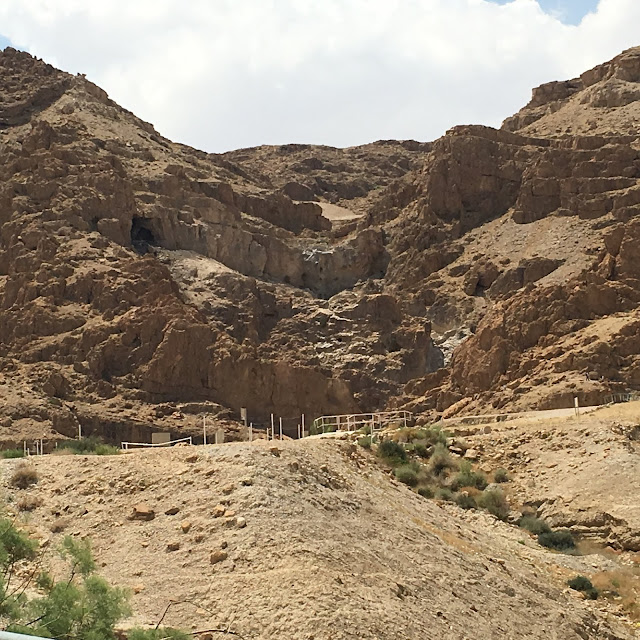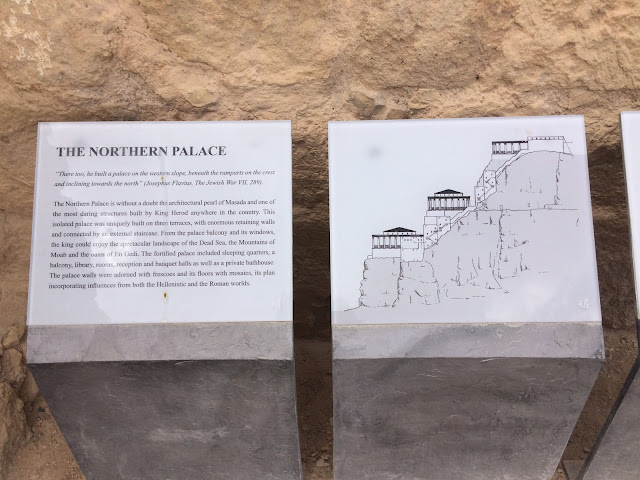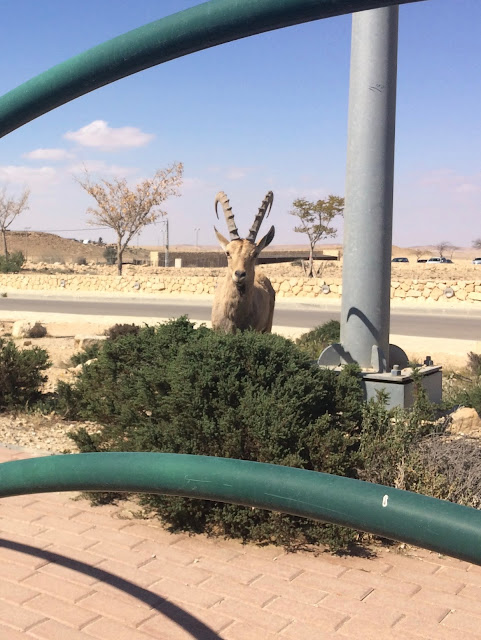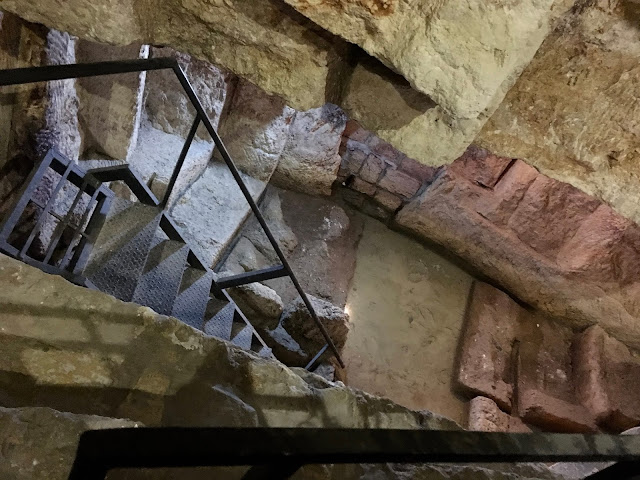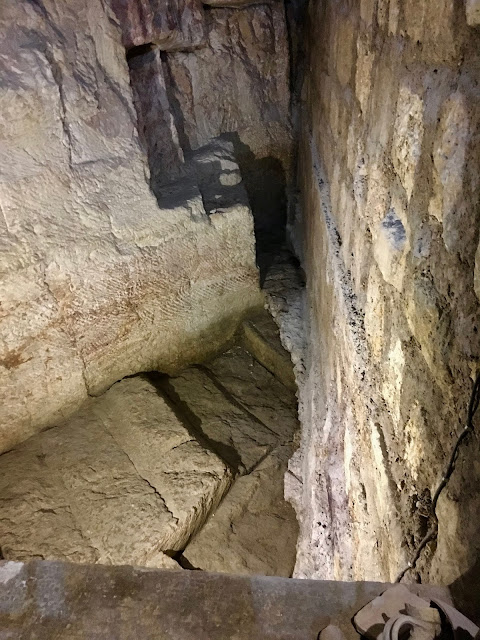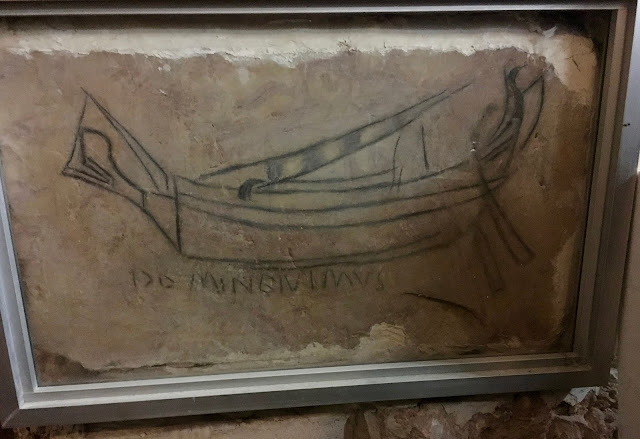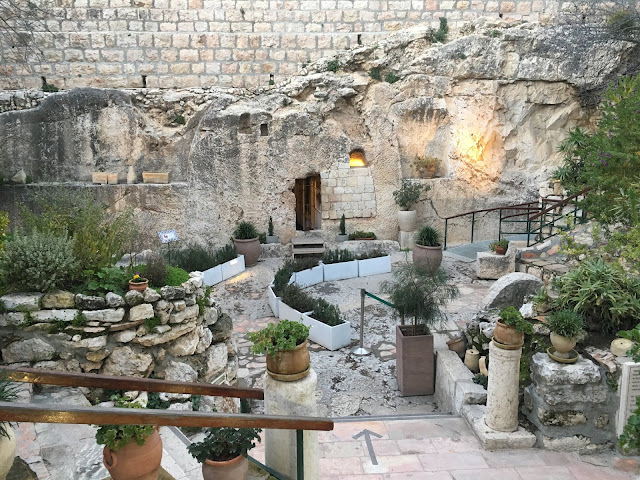A few weeks ago, while one of our sons was visiting us, we took a short trip to the south of Israel, driving down into the Jordan Valley, along the western shore of the Dead Sea (430.5 meters below sea level), stopping at sites along our way to Eilat on the Gulf of Eilat/Aqaba on the Red Sea. Jerusalem was still pretty cool, so getting some warmer weather was wonderful. Groves of date palms were along the roadside as we headed south from Jerusalem.
We stopped briefly at Qumran, the site of the finding of the Dead Sea Scrolls, which were written by the members of the Essene sect which lived there around the time of Christ.
Despite its name, the Dead Sea is really quite beautiful.
We decided to stop at Masada, an ancient fortress in the Judean Desert overlooking the Dead Sea's southern tip.
A cable car and a "snake path" can take you up to the top. It takes about an hour to climb the snake path; about 5 minutes to take the cable car. We chose the cable car. Here's a view of the snake path from the cable car.
On top of the mountain are the remains of two palaces and fortifications built by Herod the Great between 31 and 37 BCE.
According to Josephus, the first century historian, there was a siege by Roman troops of the Sicarii rebels hidng at Masada. The Romans built a ramp up the back side of the mountain, allowing them access to the fortress. These photos show the ramp from the top view and from the side..
When they reached the top, the Romans discovered 960 people -- the rebels and their families -- dead, an act of mass suicide chosen rather than to be captured.This story is seen as representing a great act of courage by Israelis,
The square shape center left in this photo is the site of the Roman camp.
.
Leaving Masada, we drove further south to the resort town of En Bokek, where we spent the night and bathed in pools of Dead Sea water, ate delicious food, and enjoyed the changing light of the great view from our hotel room window.
The hotels along the beach in Eilat remind me of the ones along the Strip in Las Vegas. Here are a few examples.
The water is clear and the beaches are beautiful.
Since we'd travelled to Eilat along the Dead Sea, we chose to see a different landscape and drive back to Jerusalem through the center of the country through both the Judean and Negev Deserts. The rock formations and different colors of sand and rock remind me of Death Valley in Southern California.
Not far from Eilat and very close to the Egyptian border (show in the first photo) is Red Canyon, where we stopped and hiked a bit.
The canyon is like a miniature Petra and very beautiful.
From Red Canyon we headed north through Mizpeh Ramon, the site of the largest erosion crater in the world (measuring 40 km long and between 2 and 10 km wide. It's pictured below.
One special treat of our trip was seeing this ibex, wandering in Mizpeh Ramon. He seemed as interested in us as we were in him.
The trip was a reminder to me of how beautiful the desert can be, and how enjoyable a road trip is with people you like.
I wish you peace, salam, shalom.

